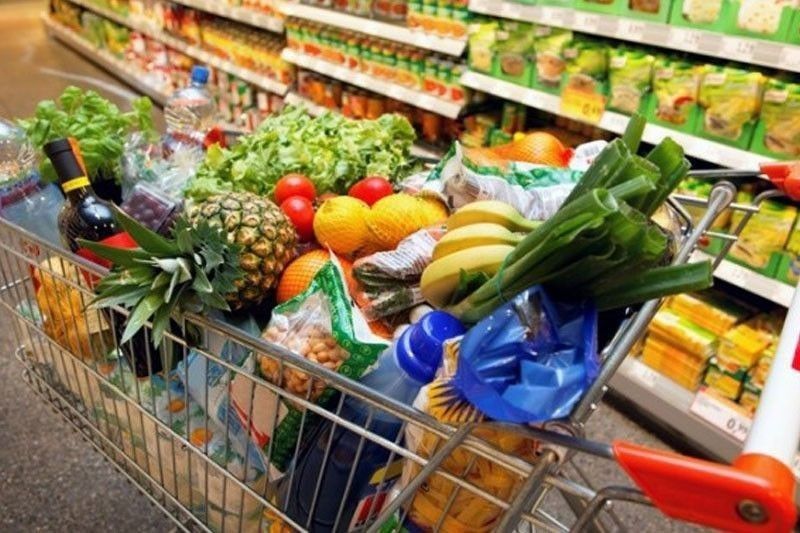Inflation cools in November

MANILA, Philippines — Inflation slowed as widely expected for the third straight month in November as prices of food items dropped, the Philippine Statistics Authority (PSA) said.
Headline inflation – the rate of increase in the consumer price index – slid to a four-month low of 4.2 percent last month.
However, this is still higher than the 3.3 percent in the same month last year.
While the market anticipated a further slowdown, the November inflation remained above analysts’ four percent consensus and of the Bangko Sentral ng Pilipinas (BSP)’s 3.7 percent forecast.
The latest print, although lower, brought year-to-date inflation to 4.5 percent, still above the central bank’s 4.3 percent target for 2021.
BSP Governor Benjamin Diokno said inflation is still projected to fall within the government’s target range next year, as supply-side pressures moderate.
He said risks remain on the upside amid the potential impact of weather disturbances on the prices of key food items, petitions for transport fare hikes, and the possibility of a prolonged recovery of domestic pork supply.
“Strong global demand amid persistent supply-chain bottlenecks could also exert further upward pressures on international commodity prices,” Diokno said.
“Meanwhile, potential delays in the lifting of domestic containment measures, as well as the emergence of more transmissible COVID-19 variants, could dampen prospects for both global and domestic demand and temper inflationary pressures,” he said.
In a briefing, PSA head Dennis Mapa attributed the deceleration to the heavily weighted food and non-alcoholic beverages, which shared a significant 93.2 percent of the overall downtrend.
Food inflation slipped to 3.9 percent from 5.3 percent on cheaper food commodities, particularly vegetables and fish.
However, prices of pork started to pick up again last month, rising to P332 per kilo from P311 for pure meat and P303 from P282 for pork with bones.
Socioeconomic Planning Secretary Karl Chua said there has been a slower pork import arrival, with only a 42 percent utilization of the expanded pork minimum access volume (MAV) as of end-November.
“The slow importation and release of inventory, together with higher demand due to the Christmas season, led to higher average pork prices in November,” Chua said.
“The uptick in prices in November shows that we need to further ease administrative requirements for the unloading and distribution of stocks to encourage more importation and help bring back pork prices to their pre-African swine fever level,” he said.
Meanwhile, Mapa said the lower prices of food items managed to offset the spike in global oil prices that consequently contributed to the higher transport inflation at 8.8 percent from 7.1 percent.
In particular, petroleum and fuels surged to 42.1 percent from 32.9 percent the previous month, while domestic air fare picked up to 10 percent. Tricycle fares just slightly went down to 2.6 percent.
Also contributing to the inflation were increases in the prices of housing, water, electricity, gas and other fuels, which had a 24.7 percent share of the headline rate.
This was largely driven by liquefied petroleum gas (LPG) which increased to 30.7 percent from 26.3 percent, as well as rentals and electricity.
“This is the effect of the increase in oil prices in the global market. However, fuel prices have gone down in the past few weeks and this will be reflected in our December inflation,” Mapa said.
To support public utility vehicle drivers cope with rising fuel prices, the government started distributing cash grants worth P1 billion. Latest data show that some 78,000 out of 136,000 target beneficiaries have received fuel subsidies.
The government also increased the passenger capacity for public vehicles from 50 percent to 70 percent in areas under Alert Level 2 to increase mobility.
Chua is recommending that passenger capacity be at full 100 percent for all transport types as vaccination rates increase.
“Enhancing people’s mobility while observing health protocols is crucial as we sustain our economic recovery amid the threat of the Omicron variant,” he said.
ING Bank senior economist Nicholas Mapa, for his part, said the BSP is still expected to retain its accommodative stance for now. He maintained that rates will be unchanged in the last policy meeting by next week.
“We do, however, expect the BSP to possibly adjust its stance by the second quarter next year as growth dynamics will likely improve considerably,” he said.
“We expect the Philippines to post robust growth numbers over the next two quarters, which may be enough to convince BSP to finally decide to adjust his current accommodative stance,” he said.
Meanwhile, inflation in the National Capital Region also eased to 2.9 percent while that of the areas outside NCR slowed to 4.5 percent.
On the other hand, consumer prices for the country’s poorest households decelerated as CPI for the bottom 30 percent income group eased to 4.2 percent. This brings the year-to-date average to 4.8 percent.
Slower growth was seen in the index of food and non-alcoholic beverages and alcoholic beverages and tobacco.
Prices of consumer goods for the poorest households outside the NCR declined to 4.3 percent. Inflation in NCR also dipped to 1.5 percent from three percent.
- Latest
- Trending






























